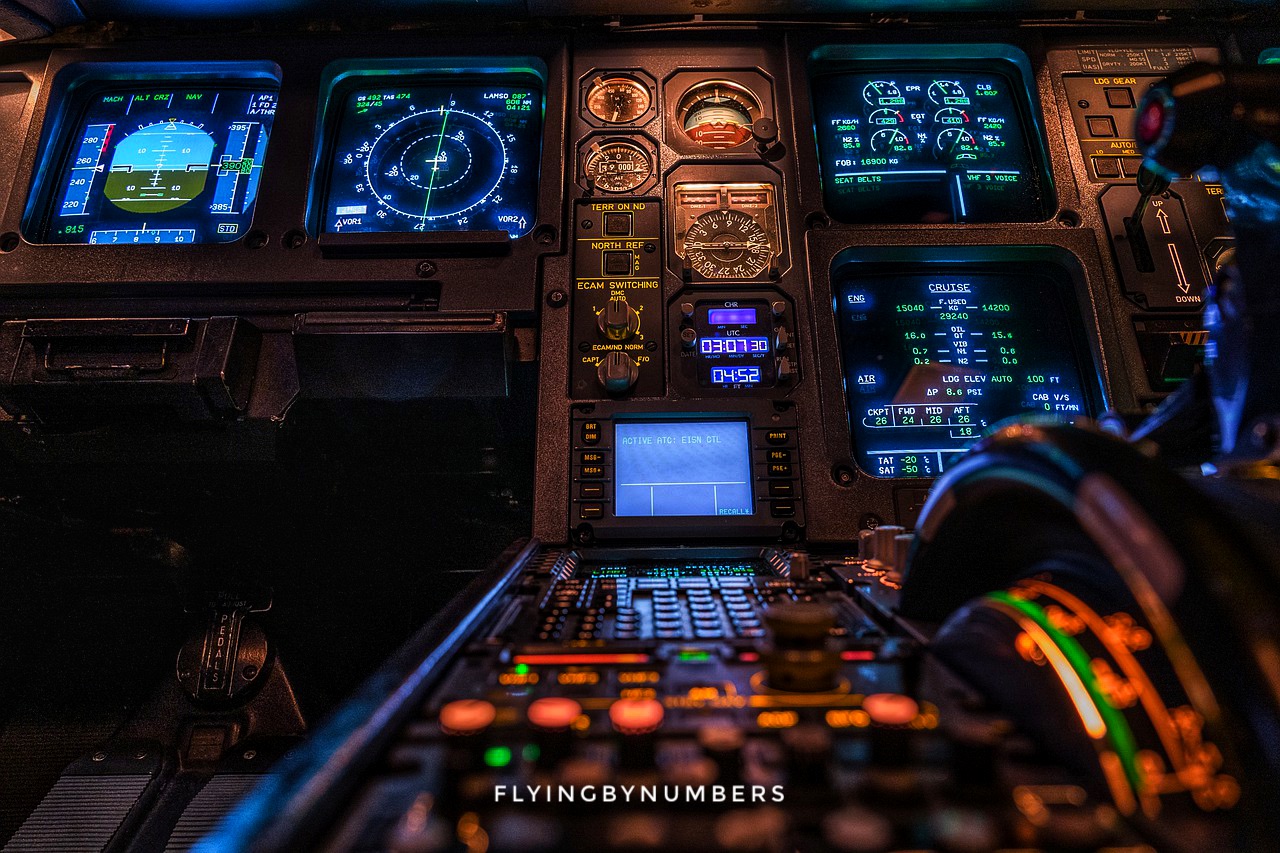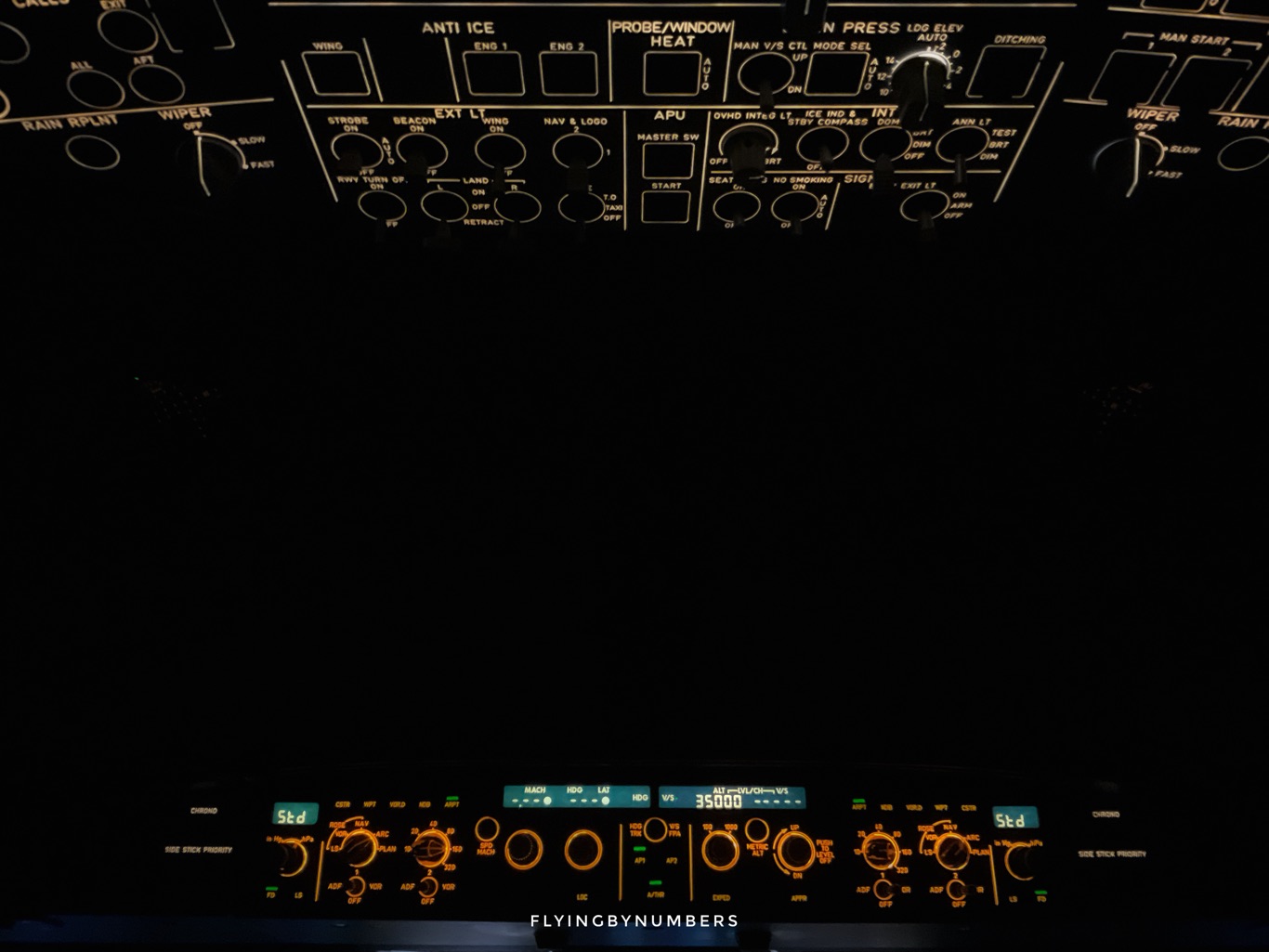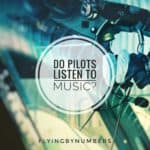When you’re on a plane and the sun goes down, you might settle in for sleep and a movie, or turn up the brightness and read a book. But what are the pilots doing? How do the pilots see during that time?
In my decades flying as a commercial pilot, I never really gave flying in the dark much thought. Landing at night, how the human eyesight best adjusts, exploring the full capabilities of modern commercial aircraft for assistance — it’s all just a routine part of pilot training.
However, it’s actually quite interesting how their eyes work in the dark. In this article, we will discuss how airline pilots see at night. We’ll also look at what kind of vision and modern tools commercial pilots have, to help fly and land aircraft in the dark!
This article applies to commercial airline pilots. Private pilots must attain a night rating — a separate, small training package that is required before flying private aircraft during nighttime.
Overview — What helps pilots see at night?
There are 3 key things that pilots are taught in their training, to help fly and land at night.
- Working with natural night vision
- Cockpit lighting
- Specialist instruments
Natural night vision — Don’t always believe it!
Pilots first learn about flying at night, long before they even step foot near an aircraft! Known as ground school, all commercial pilots learn about theoretical subjects, and must pass these exams. In addition to learning about eyesight, pilots also undergo medical exams and will have their eyesight checked, to ensure they meet the demanding standards required.
Human performance is a subject that explores how the human body reacts to flying, it also covers how eyesight works and how airline pilots see at night. It gives pilots an understanding of illusions to watch out for and how to combat them, alongside how it is best able to adjust to different light conditions.
- The human eye has two types of cells that absorb light, rods, and cones.
- Cones are responsible for colour vision and work best in bright conditions, while rods are more sensitive to dim light and changes in light levels.
- When it gets dark, the cones stop working as well, but the rods take over and allow us to see in black and white.
- Rods take approximately 10 minutes to adjust to night vision
- Cones can take up to 40 minutes to fully adjust to night vision

Interestingly, Human Performance exams teach pilots about the human bodies limitations, and it’s ability to play tricks on you under certain conditions. There are multiple illusions that make flying aircraft difficult at night. These range from Autokinesis — where a small point of light in a dark background can seem to be moving when it is infact, stationary — to something known as the black hole effect. The black hole effect occurs when pilots are flying towards a brightly lit runway in an otherwise dark background, for example, a remote airport without nearby houses. The illusion causes pilots to feel as if they are much higher above the runway than they really are, causing a natural (and potentially very dangerous) response to fly much lower to the ground.
Essentially, our eyes can only adjust so much. When it’s very dark, our vision is severely limited, no matter how hard we try to adjust. This is why most people can’t see much more than a few feet in front of them at night. Pilots are taught what to watch out for, and to rely on their instruments, and not their senses, at night.
Cockpit lighting — A dark cockpit philosophy
Cockpit lighting in modern aircraft has come along way, and is a crucial part of how pilots see at night. Once upon a time, aircraft lighting was a bit more… agricultural!
The first attempts at cockpit illumination involved lights that were removed from farm tractors and were mounted in the open cockpits of biplanes that carried the U.S. mail
Lighting must satisfy a variety of needs — Flight Safety Foundation
Now, there is an entire design philosophy around cockpit lighting, which has an arguably difficult task. Cockpit lights must be bright enough to illuminate screens and warnings in the glaring sunshine, but also dim enough to not disturb the pilot’s natural night vision for landing in the dark.
As a result, modern cockpits have considerable thought placed into their ergonomics and lighting design, with a wide range of lighting options available to optimised pilot vision at night. These include:
The main instrument panel in front of the pilot is usually dimmed at night so the pilot’s eyes can better adjust to the darkness outside. All the other switches and dials in the cockpit are still illuminated. However, there is a night setting to reduce the brightness significantly. This allows pilots to read them at a lower light intensity, without ruining their night vision.


Aircraft also benefit from using the dark cockpit philosophy. This means that in a normal condition, a modern airliner such as a Boeing or Airbus will have a relatively dark cockpit as standard, without many illuminated lights. Buttons illuminate when there is an action required — because something needs the pilots’ attention.
As a result, despite the reduced brightness, at nighttime warnings and cautions stand out clearly, keeping pilot reaction times high.
The quiet/dark design philosophy states that information is not displayed until something goes wrong. A screen or annunciator stays black until a system condition warrants notifying the pilot.
Dark Cockpit Philosophy — Avionics News
Head up displays — Modern tools
The last thing that allows pilots to see at night in the most modern airliners is the head up display, or HUD. Only fitted to some of the latest aircraft — examples include the A350 and A380, alongside the B737NG and B787 — head up displays are modern pieces of technology originating from fighter aircraft.
The HUD projects information onto the windshield in front of the pilot. This includes the speed, altitude, and other critical data. Crucially, for night flying, HUD’s also project a virtual representation of the runway.
The HUD provides all the information pilots need in the short term in one focused place. It helps pilots line up with the runway, and land, without having to look down at their main instruments. This keeps their eyes focused on the outside and prevents them from losing their night vision.
HUDs are not a feature on all aircraft yet. However, on aircraft where HUD’s are fitted, their ability to project an accurate image of the runway and the aircraft exact height and speed above it, is a hugely helpful tool for landing at night.
It is hoped that this tool will become standard on all new commercial aircraft in the near future.
Summary
So, next time you’re on a plane at night, don’t worry. The pilots can see just fine.
Firstly, the pilots have all passed medical exams checking their eyesight, including night vision and colour vision. (The flight attendant’s have eye tests too!)
In addition, things have moved on significantly since the days when pilots solely relied on their manual flying skills and natural night vision:
Finally, modern aircraft lighting isn’t just confined to the cockpit, it is now becoming a key part of the passenger experience too.
Tests are performed on how light impacts humans, and then new illumination is designed with the best available technology. Lighting has been shown to reduce jet lag and thus, contributes to overall health and wellbeing of passengers.
Cabin lighting passenger comfort — Aviation business news
Thanks for reading and, as always, if you have any additional questions about this or other topics, please let us know!





